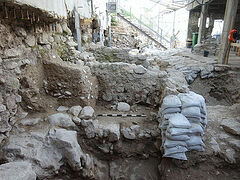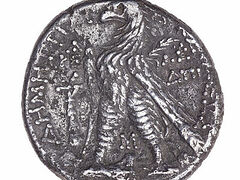Source: www.hsnes.org
October 22, 2021
During an archaeological survey carried out at the southeast end of the Dead Sea in 1986, the ruins of an ancient site were found near a spring named ‘Ain ‘Abata in the Ghor es-Safi. Its situation attracted immediate attention. After further investigations, it became evident that it was the Sanctuary of Agios (Greek: saint) Lot near the biblical city of Zoara/Ghor es-Safi (fig. 1) since it shared the same geographic location as the church depicted on the 6th century AD mosaic floor map at Madaba in Jordan (fig. 2). Biblical scholars and archaeologists interested in identifying the more than 150 places portrayed on the Madaba map had been searching for this site for decades.
Within a year of the discovery and identification of Deir ‘Ain ‘Abata (Arabic: the monastery of the abbot’s spring), an international team of archaeologists was assembled to excavate and study the site. Support came from the British Museum (London) and from the Jordanian and Greek governments, as well as from private sources. After more than ten years of excavations and research, the final report is about to be published.
The site is located on a steep mountain slope 3km southeast of the Dead Sea shore (fig. 3). The initial work was to make a series of topographic maps and contour plans and to conduct surface collections. From the outset, it was obvious that this seemingly small site was unusual; firstly, because of its precarious situation, which could not be rationalised as defensive and, secondly, because of the wealth of surface finds eroding out of the site. Architectural stones, metal and glasswork, mosaic cubes and pottery sherds were strewn in ab un dance amongst the ruins.
... Read the rest at www.hsnes.org.




